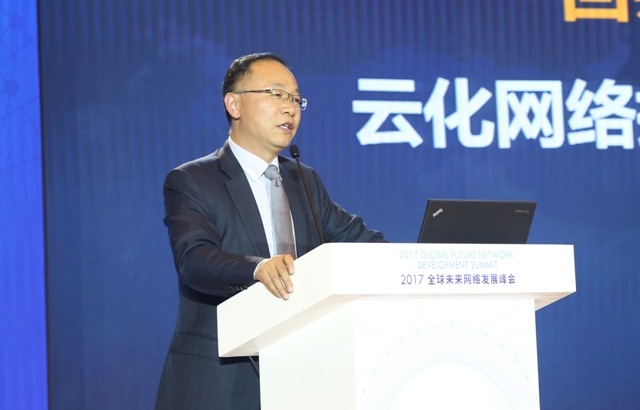Huawei: Business Driven All-Cloud Networks Address Future Uncertainties
[Nanjing, China, April 20, 2017] At the 2017 Global Future Network Development Summit, David Wang, Huawei's President of Products & Solutions, said, "In terms of top-level architecture, future networks need to return to business fundamentals. Network planning and deployment should center around how to realize business value."

David Wang said that All-Cloud networks will be a key for global operators to deal with future uncertainties.
The intelligent world is driving the digital transformation of the whole telecom industry. While presenting huge business opportunities, it is also transforming and reshaping the industry. The uncertainties of the intelligent world are an issue that the whole industry has to face up to. Some of the major challenges to the telecom operators include uncertainties about future services, business models, and technological standards.
As IT and CT further converge, everything is being connected up, and new technologies like 4K, virtual reality, 5G, and artificial intelligence are emerging, operators will be able to offer a greater variety of basic services. But as operators are less able to monetize their user base and data traffic, they will need to create innovative business models by seeking open partnerships and building an ecosystem that benefits all. At the same time, new technologies and new standards are constantly emerging, such as software-defined networking and network functions virtualization, but their value to telecom networks is still unclear. This has delayed the standardization and commercialization of new technologies.
At the Summit, David Wang said, "For a long time, global operators have been technology-driven in the way they build their networks. And this standardized path of technological evolution serves them well when they know very well about their business opportunities. But future business development involves facing up to some serious unknowns. The old logic of network evolution may no longer be effective. Today, we have to consider exactly how to generate business value when planning future networks. That is the only way to seize the first-mover advantage." Wang added, "All-Cloud networks will be a key to address future uncertainties for global operators." Huawei provides All-Cloud Network architecture that is open, agile, intelligent, and highly efficient, to help operators build value-driven networks and make the most out of their network assets.
Wang proposed three principles for cloudifying telecom networks:
First, operators should see their networks as a business proposition. They should focus on whether their investment plans will bring business success, and on that basis decide their roadmap for technological evolution. Huawei recommends that operators first consider expanding their B2B business and improving the user experience that they deliver to consumers. They should offer a ROADS (Real-time, On-demand, All-online, DIY, and Social) experience to end users. Agile innovation and fast, low-cost iterations of their service offerings are the best response to the uncertainties of the future.
Second, network evolution should be phased and driven by the target network architecture. Plans for cloudifying telecom networks must be properly adapted to the realities of operators' existing networks and their business plans. The phased network evolution strategy should ensure full interoperability between legacy and new services.
Third, a unified cloud network architecture needs to be established. All-Cloud networks are still at the initial stage. The industry needs to come together to define the concept so that a stable, unified architecture can be created. At the service layer, All-Cloud networks should take advantage of the flexibility and agility of OTT and IT services to hedge against uncertainties in technology and protocols, and support flexible innovation in services. At the network architecture layer, operators need standardization to enable interconnectivity and reduce complexity.
Huawei has won more than 300 contracts from global telecom operators and enterprise/industry customers to deploy All-Cloud networks. Huawei also has extensive experience of working together with its customers in innovation of B2B services, cloudification of telecom WANs, data center cloudification, and industry digitalization. Looking to the future, Huawei will continue to innovate jointly with its global customers in All-Cloud networks. The company will also continue to actively engage in the top-level design of All-Cloud network architecture and upgrade of existing networks to All-Cloud networks, and enable customers' digital transformation and business success.
At the end of his speech, Wang called on all players across the industry ecosystem to work together on All-Cloud networks. He said the industry should create an ecosystem for shared success, and turn All-Cloud networks into a business reality.

